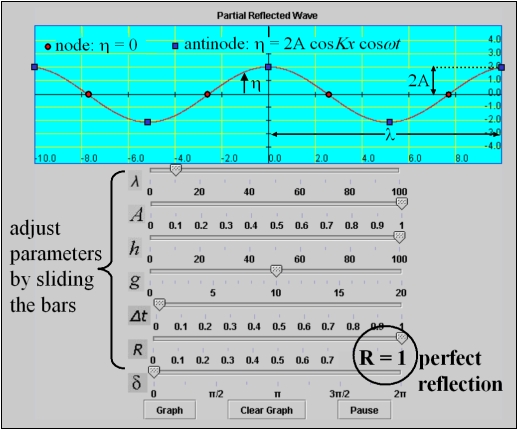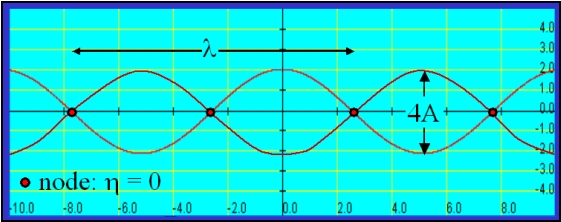2.20
Partial Reflection
Examples
Example 1:
(Trivial) plane progressive wave
Load the applet. Use the default values but set the reflection coefficient R=0, by sliding the corresponding slide bar. This is simply a plane progressive wave!
Example 2:
Standing wave
Load the applet. Adjust the following values; by sliding the corresponding slide bars:
l = 10 (with the default x & y scaling you will observe two waves)
A = 1
H = 100 (just slide the bar all the way down. Deep water)
g = 10 (keep the default value)
Dt = 0.01 (or any small value)
R = 1 (perfect reflection)
d = 0 (antinode at x = 0)


Example 3:
Partially reflected wave
Load the applet. Adjust the following values; by sliding the corresponding bars:
l = 10
A = 1
H = 100
g = 10 (default value)
Dt = 0.01 (or any small value)
R = 0.5 (partial reflection)
d = p/2 (node at x = 0)

Observe the wave. Now there are NO points with constantly zero free surface elevation. The amplitude at the nodes is greater than zero, but still less than A. The amplitude at the antinodes is less than 2A, but still higher than A.
Now, slide the Dt bar all the way to 1. This way you have the minimum screen refresh rate. The resulting free surface is shown with a black dashed line in the figure above. It is the same “picture” you would see if you run an experiment using a strobe light with appropriate frequency.